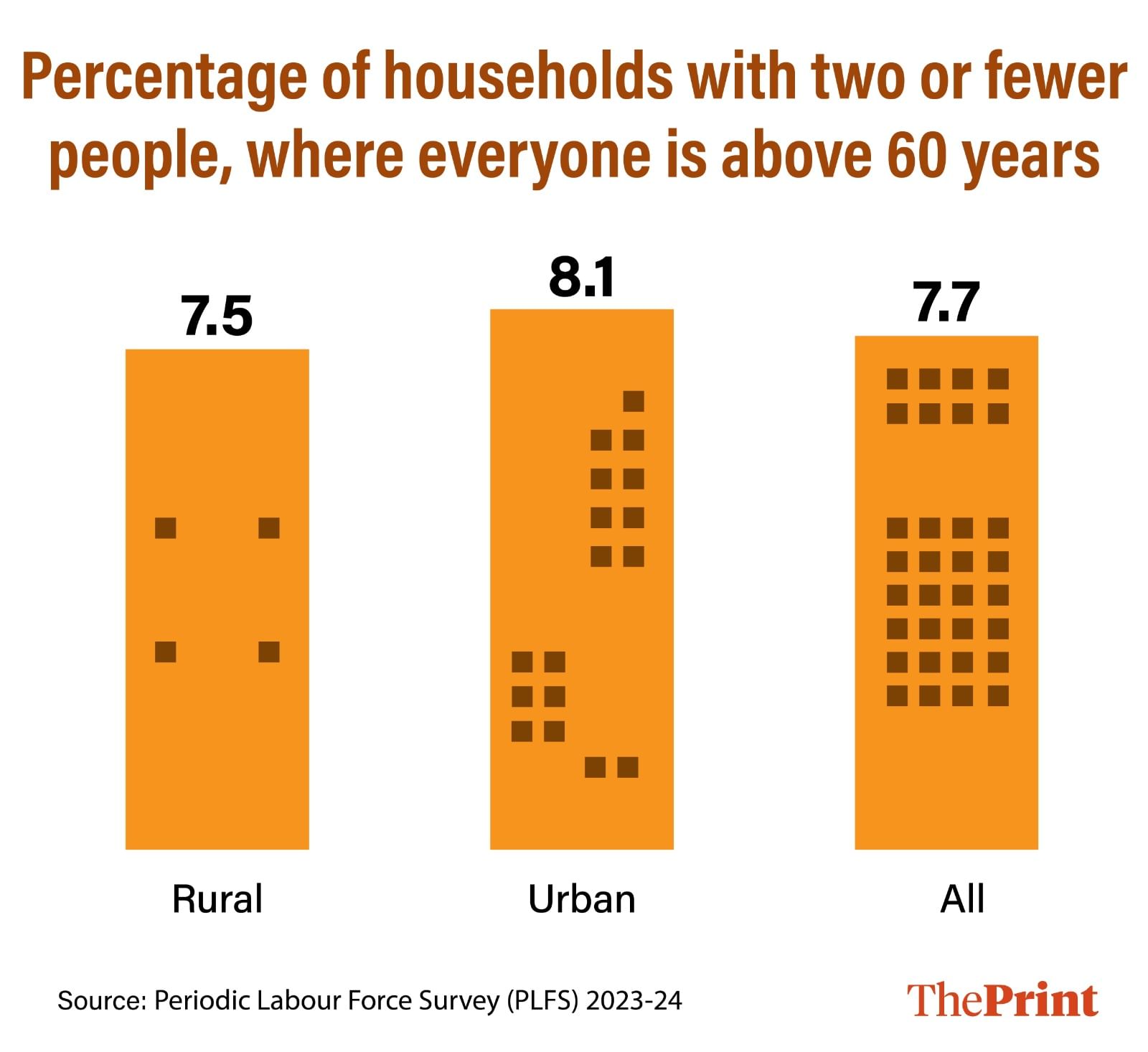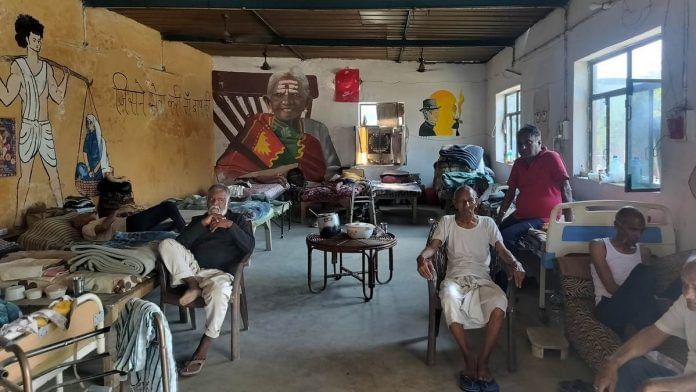India is getting older and faster than most realise. More than 10 percent of our population—over 14 crore people—are already aged 60 years or above. By 2050, this number will double, and for the first time in history, the elderly will outnumber children below 15.
According to the United Nations Population Fund’s India Ageing Report 2023, India’s elderly population by 2046 is expected to surpass its child population.
The report also highlights a worrying 41 percent decadal growth rate among the elderly. Yet, our policies, institutions, and even mindset remain unprepared for this profound demographic shift.
The erosion of family-based care
India’s traditional family structure, once the bedrock of elder care, is eroding. Urbanisation, migration, and the rise of nuclear families have drastically altered how we live and with whom we live. In the past, elders could rely on their children and extended families for physical, emotional, and financial support. Today, that safety net is fraying.
The reasons are structural, not just cultural. Younger generations are moving to cities for education and work. Women, traditionally the primary caregivers, are increasingly participating in the workforce, which is a sign of progress but also a challenge for household caregiving.
Also read: India’s silver economy is booming—app, startups, part-time ‘daughters’, dementia centres
The silent crisis at home
Beneath the surface of this demographic story lies a quieter, more human crisis. Increasingly, India’s elderly population is living alone or with only another senior partner.
As per Periodic Labour force Survey (PLFS) 2023-24, across the country, 7.7 percent of households consist solely of elderly members aged above 60 years, with a maximum household size of two. The share is slightly higher in urban India (8.1 per cent) compared to rural India (7.5 per cent), reflecting changing family structures and the gradual erosion of traditional support systems.

With no younger family members around to assist, these elderly individuals must rely on each other despite their own physical and emotional limitations. Such households often remain hidden from public view, yet they represent one of the most vulnerable segments of our society.
The situation is particularly concerning in southern states such as Andhra Pradesh (16.3 per cent), Tamil Nadu (15.3 per cent), and Kerala (15.4 per cent), where the share of elderly-only households is alarmingly high.
In these one- or two-member households, frailty, illness, and loneliness often go hand in hand. Many older adults grapple with mobility issues and chronic illnesses such as diabetes or hypertension, alongside deteriorating eyesight and hearing. When both partners are aged and unwell, even simple daily activities—like visiting the market, cooking meals, or seeing a doctor—can become overwhelming tasks.
The absence of younger family members or community networks further deepens their isolation. Without regular check-ins, social engagement, or reliable systems of care, many elderly individuals are left to fend for themselves. In smaller towns and rural areas, where access to public transport and healthcare services is limited, these difficulties intensify, leaving the elderly particularly exposed and unsupported. These are not isolated stories of individual hardship—they reflect a growing demographic reality that demands urgent social, policy, and community attention.
Also read: India’s seniors are facing abuse in families. Children are no longer Shravan Kumar
Building a care economy
What India urgently needs is the development of a care economy—an organised ecosystem that recognises caregiving as both essential social infrastructure and a viable economic sector. This means investing in training, certification, and employment opportunities for professional caregivers such as home nurses, physiotherapists, geriatric aides, and social workers.
A robust care economy would also formalise and value the immense unpaid care work—mostly done by women—that currently goes unrecognised. The International Labour Organization (ILO) estimates that unpaid care work contributes significantly to GDP, yet remains invisible in economic accounting. By formalising these roles, India could not only improve the quality of life for its elderly population but also open millions of new job opportunities. This would require coordinated efforts between government, private sector, and civil society—ranging from vocational training programmes to financial incentives for caregiving enterprises.
Also read: How India’s seniors are fighting loneliness—Love, loss, and logins
A moral and economic imperative
Caring for the elderly is not merely a social welfare issue; it is both a moral obligation and an economic necessity. On the moral front, a society’s measure lies in how it treats its most vulnerable members.
The elderly, who once built and sustained our families and communities, deserve dignity, comfort, and security in their later years. Economically, investing in care infrastructure can generate substantial returns. It can create formal employment, and improve productivity by relieving the burden of unpaid care work on working-age women.
Moreover, the growing elderly population represents a significant segment of consumers with distinct needs—healthcare, assistive devices, leisure, financial services. A vibrant care economy would not only serve humanitarian goals but also stimulate demand and innovation across sectors.
Rethinking policy priorities
India’s public health and social policies must evolve to reflect this new demographic reality. The focus must shift from reactive hospital-based treatment to proactive community-based care. Integrating elder care into the primary health system, creating local “care hubs,” and leveraging technology for remote monitoring and tele-consultation can go a long way.
We also need financial and policy support for caregivers. Tax incentives, social security coverage, and recognition under labour laws can make caregiving a respected and sustainable profession. The government’s “National Policy on Senior Citizens” and schemes like the Integrated Programme for Older Persons are steps in the right direction but need scaling up and modernisation.
Towards an inclusive future
India stands at a crossroads. The choices we make today will determine whether our ageing population becomes a demographic burden or a social and economic opportunity. An inclusive care system can transform the ageing challenge into a development advantage.
As India moves toward becoming an aging society, it must build institutions that reflect compassion as much as efficiency. Caring for our elderly is not an act of benevolence—it is the foundation of a humane and equitable society.
If we build a strong care economy now, we will not only secure dignity for today’s elders but also ensure comfort and security for ourselves in the years to come. Because ageing, after all, is not someone else’s story—it is the most universal future we all share.
Palash Baruah and Sameeha Jameel are Fellow and Research Analyst at National Council of Applied Economic Research (NCAER), New Delhi. Views are personal.
(Edited by Prashant)






